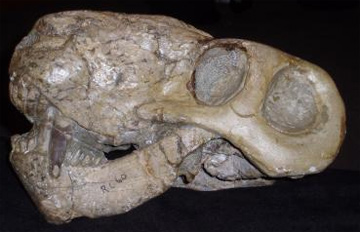Recovery from worst mass extinction took 30 million years
Recovery from worst mass extinction took 30 million years
mongabay.com
January 20, 2008
The recovery of complex ecosystems following history’s worst mass extinction took 30 million years reports a study published last week in Proceedings of the Royal Society B.
Analyzing the recovery of tetrapods — animals with a backbone and four legs, such as amphibians and reptiles — during the Permian extinction event some 250 million years ago, Sarda Sahney and Professor Michael Benton at the University of Bristol found that though tetrapods appeared to recover quickly, ecological communities took some 30 million years to reach previous levels.
“Our research shows that after a major ecological crisis, recovery takes a very long time. So although we have not yet witnessed anything like the level of the extinction that occurred at the end of the Permian, we should nevertheless bear in mind that ecosystems take a very long time to fully recover,” said Sahney.
 The sabre-toothed Lycaenops was a top predator of the latest Permian in South Africa. Lycaenops was a gorgonopsian, one of a group of highly successful animals that dominated faunas in the Late Permian, but were wiped out, together with 90 percent of all species, by the end-Permian mass extinction. Credit: Mike Benton, University of Bristol |
Scientists believe that at the end of the Permian, large-scale volcanism triggered widespread changes in Earth’s atmosphere and oceans. Roughly 95 percent of marine species and 70 percent of land species went extinct.
The new research has present-day implications. Some scientists say we are presently in the midst of a sixth great extinction, the Holocene. Unlike previous mass extinctions in the past — the Ordovician, the Devonian, the Permian, the Triassic and the Cretaceous — the current extinction event results directly from human activities, including habitat destruction, overexploitation, and the introduction of alien species to environments where they do not occur naturally. Scientists estimate that extinction rates are presently 1,000-10,000 times the historical background rate of about 1 species per million per year. They say that extinction rates will significantly increase in coming years, especially as the impacts of climate change intensify.
Related
Worst mass extinction shifted entire ecology of the world’s oceans. New research suggests that Earth’s greatest mass extinction did more than wipe out an estimated 95% of marine species and 70% of land species; it fundamentally changed the ecology of the world’s oceans. The study, published in tomorrow’s issue of the journal Science, found that “ecologically simple marine communities were largely displaced by complex communities”, a shift that continues has continue since.
Poisonous volcanic gas probably caused worst mass extinction says new study. The mass extinction event at the end of the Permian — where more than two-thirds of reptile and amphibian families perished and 95% of oceans life forms became extinct — was probably caused by poisonous volcanic gas, according to research published in the journal Geology. The researchers believe that volcanic gases from the eruption, near present day Siberia, depleted earth’s protective ozone layer and acidified the land and sea.







